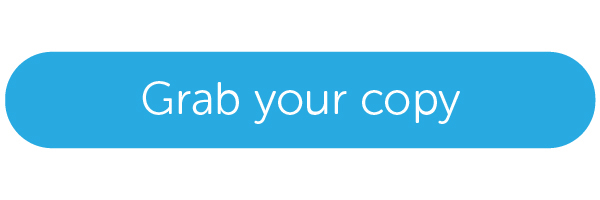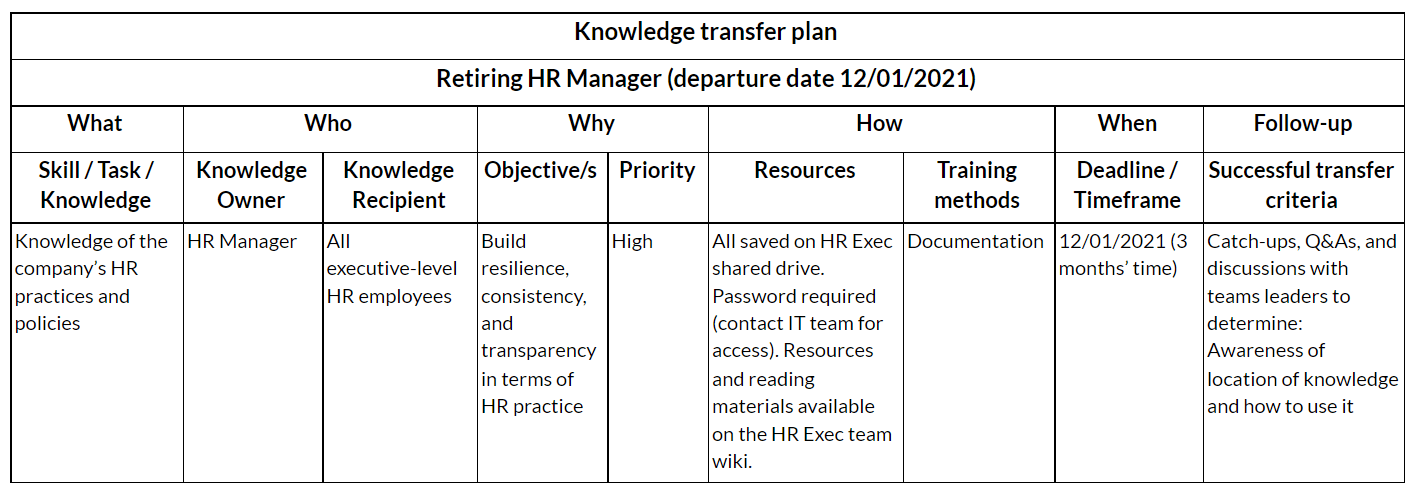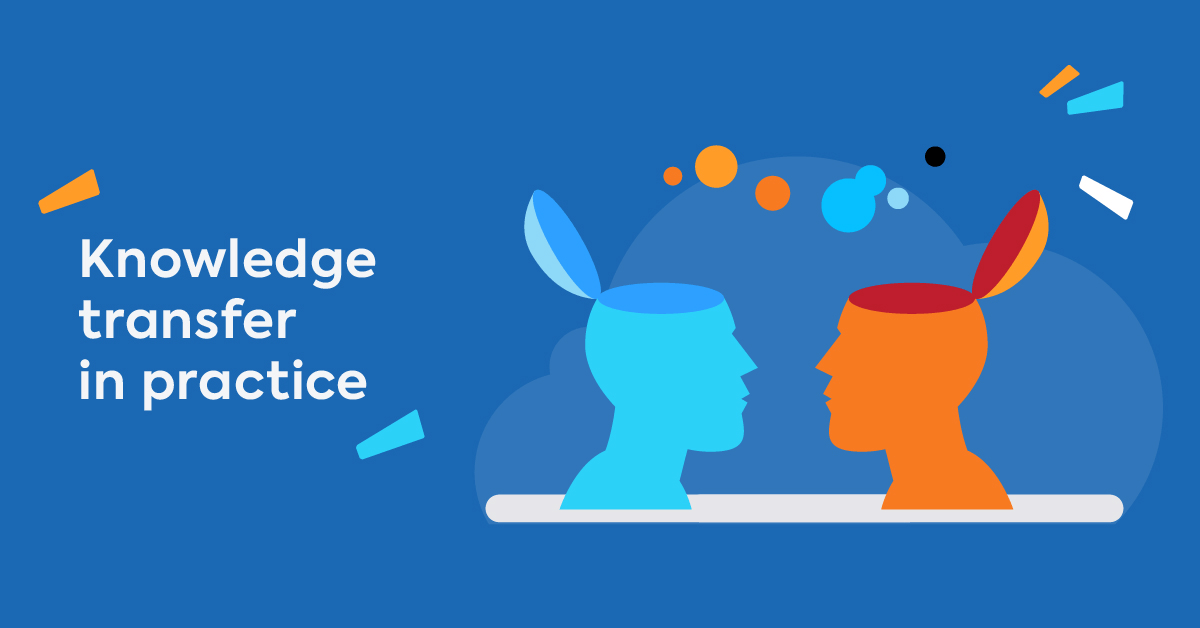Close your eyes and imagine it’s 1597. In America, the first pilgrim settlers tried, and failed, to settle in Newfoundland. In England, famed philosopher Sir Francis Bacon published his “Meditationes Sacrae”, in which he wrote that “knowledge itself is power.”
Now open your eyes. OK, we all know what happened with the settlers. But, how about Bacon’s prophecy? How did that pan out? Well, a quick peek into the world of HR and L&D and, almost half a century later, Bacon’s observation still seems pretty spot on. Knowledge is power. Particularly when it comes to business.
What unites the world’s most powerful companies today is a respect for and commitment to the sharing of information throughout the organization (its formal name now is a knowledge transfer plan).
That doesn’t mean that every employee has to know everything. Far from it. But it does mean that if your culture encourages and supports a knowledge transfer strategy (across locations, teams, departments, and grades) it’s more likely to succeed.
But why?
Why you need a knowledge transfer plan
Chances are you already effectively onboard new hires. And have a solid process in place to ensure that before one of your employees leaves the company or moves to another role, there’s a thorough handover period with their successor.
A knowledge transfer plan is more than this.
A knowledge transfer plan systematically identifies, captures, and documents critical information from experts across a business. It also ensures that this information is structured, stored, and transferred to everyone who could benefit from it.
But why do you need to standardize and document this additional knowledge transfer process? Surely, if you’ve already got the other formal HR processes in place (thorough employee onboarding and offboarding programs, for example), there’s no need to overcomplicate things by adding to the admin.
Let’s take a look.
Minimizing risk, future-proofing performance
The main objective of a knowledge transfer plan is to minimize the risks associated with the loss of talent and knowledge in an organization.
If you’re running (and plan on remaining) a small company, the risk of following an informal, anecdotal approach to knowledge transfer is fairly low. But, for most businesses — especially those looking to scale — a formal, documented knowledge transfer plan is an essential part of minimizing risk and future-proofing performance in an ever-changing operational world.
Out of the office
Take remote working, for example. A few years ago it was frowned upon, viewed as an inconvenience or a fad, and an exception to the rule. Now, (with a little shakeup from a worldwide pandemic), it’s becoming the norm for many progressive businesses.
It’s a positive step in many ways. But, with a dispersed workforce, there’s a greater chance of people and information becoming siloed. And of knowledge falling through the cracks — particularly tacit knowledge that’s acquired through experiences, observations, and insights.
On the up
Scaling companies looking to build synergies are another good example of where having a structured knowledge transfer plan really pays off. Embedded in the belief that the whole is greater than the sum of its parts, the concept of synergy is closely linked with company acquisitions, mergers, or teams working more closely together.
And it requires a systematic and structured approach to knowledge management to make it work.
More than succession planning
As we’ve seen from the synergy example above, a knowledge transfer plan isn’t just about planning for when a key employee leaves or changes jobs. It’s something that proactively ensures there’s a formal knowledge-sharing strategy in place to support the proper and efficient flow of information within an organization.
Turn knowledge into a competitive advantage with TalentLMS
Store and repurpose information to create compelling courses.
Try out the training platform that users consistently rank #1.
Building your knowledge transfer plan
So, how to go about it? The first thing you’ll need is time. Setting up a knowledge transfer plan isn’t a two-minute job. There can be a lot of information to gather and it does require careful thought. But once it’s done, it’ll serve you well.
To guide you through it, we’ve created a knowledge transfer plan checklist. Under each of the five steps below, you’ll be able to check off: what needs to be done, who needs to be involved, and why. So, let’s get started.
Step 1. Identify needs
This first step sets the standard for the rest of the plan. Here, you need to pinpoint what type of information needs to be gathered and from whom. Questions to ask include:
- What are the main risks to your business?
The list you gather here will clarify why you need to initiate a knowledge transfer plan. For example, a key member of your team is leaving or there’s a company merger in the pipeline. This process will also highlight any hard deadlines you need to work towards. - What business areas are most impacted by those risks?
Be prepared! You could be talking about all areas of the business here. - Who are the “go-to” people or SMEs (subject matter experts) in those areas?
- What tasks do they carry out that no one else does?
- What other activities are these people relied upon to do?
- Who needs to be involved?
At this stage, your HR department – the team or individual leading on your knowledge transfer project — will probably take the lead in gathering and collating the information. They’ll need to involve key representatives from each of the relevant business areas as and when necessary.
Step 2. Prioritize knowledge
Now it’s time to consolidate all of the information identified in Step 1. And give it some order by grading importance, defining availability, and assessing frequency. So, that means quantifying:
- What information is most needed to keep your business running
- How many people possess this knowledge
- How often this knowledge is required
- Who needs to be involved
This evaluative stage will probably involve the person leading your knowledge transfer project.
* Tip: Why not try to apply a formula here? For example, apply a 1 to 3 ranking to each category, add up the total and then assign either a high, medium, or low ranking to determine priorities.
Step 3. Gather knowledge
Here’s where you’ll start to see a plan forming. You’ve identified and prioritized the information and people you need. Now’s the time to start pulling it together.
Make a list of all the SMEs you’ve identified and use the following guide to capture their knowledge. (And remember, the process you follow here needs to be carried out sensitively and sustainably — no lengthy, data-dump sessions allowed.)
What questions do you need to answer?
These could include:
- the critical tasks this individual oversees and their importance level
- when and how often each task or activity is carried out
- if there are any dependencies (is there anything that needs to be done before or after)
- who’s impacted
- why it’s important
- what resources are required to carry it out
- what technical information is needed (logins, access rights, etc.)
- what are the limitations of the current process
- how could the current process be improved
- any risks that could prevent delivery/completion
- any quirks, bugs, workarounds, or shortcuts that form part of the process
What type of information are you trying to capture?
Classify each piece of information whether it’s:
- explicit: knowledge that’s easy to share and document
- implicit: the application of explicit knowledge (i.e. transferable skills)
- tacit: knowledge that’s acquired through experiences, observations, and insights
- transient: knowledge that’s made, used for a while, and then becomes redundant
How are you going to capture the different types of information?
Some ways to capture tacit knowledge include:
- mentorship
- paired work
- guided experience
- communities
- work shadowing
- informational interviews
- coaching
For explicit knowledge, you can pick:
- guided experience
- documentation
- simulation
- wikis
- audio
- video
- transcripts
- graphics and charts
- job aids
Step 4. Transfer knowledge
There’s a thin line between capturing and transferring knowledge. By capturing knowledge (particularly if it’s tacit knowledge) a big part of the transfer process usually takes place at the same time. But it’s still important to make provision for information that needs to be shared more widely.
Factors you need to consider here are:
- What is the skill or knowledge being transferred?
- What time and resources are available?
- How many people are involved?
Instructor-led training is a good way of sharing knowledge that is valuable to a wider group or team. On-the-job training might be better if it’s one-to-one. - What are the preferred channels of communication of the people involved?
You might have to share the same piece of knowledge in different ways if you have a wide and varied audience. - What security and privacy levels apply to the information?
This will determine how widespread the transfer of knowledge can be and the methods used.
* Tip: When you get to this stage, it helps to have a learning management system in place. If you have, great. Use it to:
- Organize knowledge so it’s easy to find. (A tech-based knowledge management system can help provide a searchable, easy access route to information)
- Drag and drop in all types of media
- Use built-in tools to keep learners connected and talking
- Customize security and privacy levels
- Keep knowledge up-to-date by assigning responsibilities to individuals or teams — another way of doing this is by providing a social framework i.e. a Wiki for collective responsibility.
Step 5. Evaluate the knowledge transfer plan
With so much involved in its creation, you’ll want to find out if your knowledge transfer plan has worked (or not). To do this you need to define what success looks like. And this will depend on the goals (or the “whys”) that you identified at the start.
There are some metrics that are easier to obtain — for example, if your aim was to complete a knowledge transfer to address the fact that most of your workforce will be retiring in the next five years. With this, you can track performance metrics associated with the key departments affected to monitor any changes in the data.
Evaluating time from hire to productivity and costs associated with delivering employee training programs (an internship onboarding package, for example) are also easy to metrics access and review as long as the right data’s collected.
With some goals, you might have to use qualitative as opposed to quantitative methods to access outcomes. Ask for and record feedback, arrange follow-up training sessions to check retention and reinforce knowledge, and carry out Q&A sessions, informal spot checks, and catch-ups with newly appointed SMEs.
And, remember, this is an ongoing process. Adapt and change to meet new organizational goals and to address data trends that require a review in approach.
Download your knowledge transfer plan template
Ready to get started? Good. We’re ready to help you on your way. Just download your knowledge transfer plan template and fill in the details.
Download our knowledge transfer plan template.
Fill in your data using our step-by-step guide.
Need some inspiration? Let’s use the (fictional, but quite realistic) example of Jo’s forthcoming retirement from her role as HR Manager.
An experienced HR professional, Jo’s been involved in managing the company’s HR for over seven years. Her responsibilities range from developing the department’s comms strategy to launching internal campaigns and providing specialist HR advice on individual conflict resolution cases.
Aware that work doesn’t stop because she’s moving on, it’s decided that a knowledge transfer plan can help capture her wealth of knowledge, both explicit and tacit. Based on our checklist, here’s a knowledge transfer plan sample that addresses Jo’s story.

Thanks, Mr. Bacon
Now it’s over to you. Having a good knowledge transfer plan in place is a great foundation for open communication, transparency, and skill development. And that, in turn, sets the foundation for a healthy and powerful (thanks, Francis Bacon!) organization.

